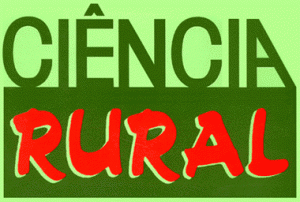By Juliana Steffens, Professor/Researcher, Universidade Regional Integrada do Alto Uruguai e das Missões (URI), Erechim, RS, Brazil
The researchers aimed to evaluate the ultrafiltration process in the recovery of whey constituents and, for this, conducted sequential factorial designs with samples, using 100kDa membrane and varying the temperature (5 to 40ºC), the pressure (1 to 3 bar). Based on the best results, where performed experiments with membranes of 50kDa and 10kDa The retention of proteins with the membrane of 50kDa was about three times higher when compared to the 100kDa membrane. The concentrate obtained with the membrane of 10kDa, 10ºC and 2 bar showed a mean protein retention of 80%, increased protein solubility, emulsion stability and identification of β-lactoglobulin (18.3kDa) and α-lactalbumin (14.2kDa) fractions. The results show, therefore, that the use of membranes of 50kDa and 10kDa are industrially recommendable alternatives to the concentration of whey proteins. Some references for the development of the present study were used as Baldasso, et al. (2016), Macedo, et al. (2015) and Abismaïl, et al. (2000).
According to researcher Juliana Steffens, the importance of research is to show that the use of membranes is an effective technique to produce concentrations of whey proteins. “Whey cheese, for example, which is a by-product of cheese production can be concentrated from the use of membranes. We can recover proteins that have important nutritional and functional properties, “she comments. These proteins can be incorporated into products of interest, thus increasing their nutritional value.
For Juliana, the research innovation is in the use of membranes for concentration of protein, made in a process without applying heat sources. In traditional processes, such as evaporation, the proteins end up being denatured, which impairs their nutritional and functional properties. In article “Whey protein concentration by ultrafiltration and study of functional properties” published in Ciência Rural (vol. 48, no. 5), you can find the full research.
References
ABISMAÏL, B., et al. Emulsification processes: on-line study by multiple light scattering measurements. Ultrasonics Sonochemistry. 2000, vol. 7, no. 4, pp. 187-192, ISSN: 1350-4177 [viewed 24 July 2018]. Available from: https://www.ncbi.nlm.nih.gov/pubmed/11062874
BALDASSO, C., et al. Whey fractionation through the membrane separation process. Separation Science and Technology [online]. 2016, vol. 51, no. 11, pp. 1862-1871, eISSN: 1520-5754 [viewed 24 July 2018]. DOI: 10.1080/01496395.2016.1188115. Available from: https://www.tandfonline.com/doi/abs/10.1080/01496395.2016.1188115?journalCode=lsst20
MACEDO, A., et al. Assessment of the performance of three ultrafiltration membranes for fractionation of ovine second cheese whey. International Dairy Journal [online]. 2015, vol. 48, pp. 31-37, ISSN: 0958-6946 [viewed 24 July 2018]. DOI: 10.1016/j.idairyj.2014.12.003. Available from: https://www.sciencedirect.com/science/article/pii/S0958694614002556?via%3Dihub
To read the article, access it
ILTCHENCO, S., et al. Whey protein concentration by ultrafiltration and study of functional properties. Cienc. Rural [online]. 2018, vol. 48, no. 5, e20170807, ISSN: 0103-8478 [viewed 24 July 2018]. DOI: 10.1590/0103-8478cr20170807. Available from: http://ref.scielo.org/4x8tqg
External link
Ciência Rural – CR: <http://www.scielo.br/cr>
Como citar este post [ISO 690/2010]:


















Recent Comments